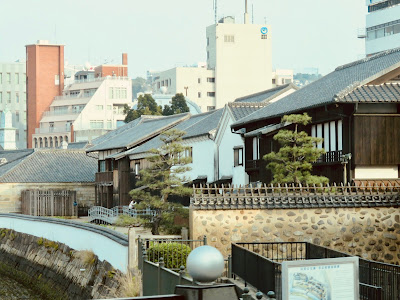Home in Tucson
I am home in Tucson, almost unpacked and almost fully recuperated from a very long day of travel on Sunday—and the cold I started a few days prior. Even when things go well, long-distance travel, especially 23 hours including waiting times, is rough on the body and the psyche. But before I get to that travel day, LFLatSea will take us all back to Nagasaki and Kagoshima, Japan. I also intend adding one or two entries about the ship and its personnel, and some photo comparisons of China then (1994) and now.
Thursday, 28 March 2019
Nagasaki, Japan
This morning we are sailing toward Nagasaki for our scheduled arrival at noon. Hard to believe I will be rounding the curve and heading home in just a few more days. After a long day on my own in Tianjin, I decide I really don’t need to visit another shopping mall, even though there is a free 45-minute shuttle from the ship. So I stay on board during our second day in Tianjin, blogging, relaxing, and even starting some pre-packing sorting (it’s amazing how much extraneous stuff one picks up along the way).
The entrance into Nagasaki harbor is quite beautiful even though the sky is still somewhat overcast (it will clear up later).
Because the city is quite hilly and places of interest quite far apart, I decide early on to join a shore excursion. Our tour guide knows quite a lot about the history of Nagasaki. She is a little eccentric in her presentation, but her English is good and her jokes are funny.
 |
| Tour Guide Demonstrates the Importance of Fishing to the Development of Nagasaki |
[Side note: I visited Hiroshima in May 1985 on my first visit to Japan. I do not recall seeing a museum, but the outdoor relics and eternal flame were impressive and moving. Since that time, I believe that Hiroshima has added a museum.]
 |
| Exterior of Atom Bomb Museum |
 |
| Statue Outside Museum Entrance |
 |
| Interior Entrance Ramp |
 |
| Museum Exhibit Hall |
 |
| Remains of Cathedral Exterior at Explosion Site |
Outside the museum a passageway and flight of stairs (elevators also available) lead to the Hypocenter Park, where a black obelisk marks the exact spot over which the bomb exploded.
For almost two hundred years prior to its re-opening in the late 19th century, Japan isolated itself from the rest of the world. During that period Nagasaki provided the only place that sort-of welcomed foreigners. An island colony was set up to house Dutch traders and their wives and concubines (and to keep them separated from the local population). No longer an isolated island, this section of Nagasaki is located very close to the cruise port and is easy for tourists to visit. Unfortunately, because of the lack of time, the only views I had were from the tour bus window.
The third and last stop of the shore excursion is the Nagasaki Historical Museum, which focuses on larger cultural aspects of life in Japan's southernmost metropolis. Unfortunately, there are few English explanations in the museum to help the foreign visitor put the exhibits in context. The most interesting part of the museum was a series of tatami-mat rooms (for which we had to remove our shoes), demonstrating aspects of the lifestyle of a well-to-do local family.
 |
| Museum Gateway and Courtyard |
It is a short ride back to the cruise port, during which we pass the ship's-bow adorned entrance to a shopping arcade.
The next blog will take us to Kagoshima, still in Kyushu, the last port before disembarkation in Yokohama and flying home from Tokyo's Narita Airport.























__03.jpg)